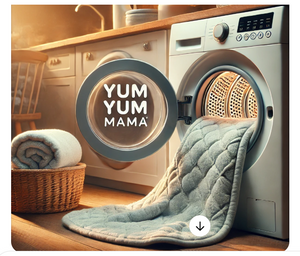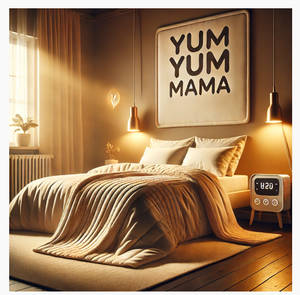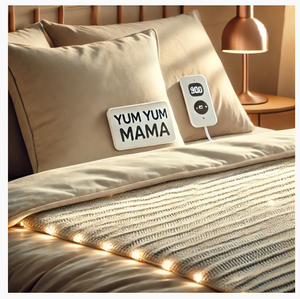How Does an Electric Blanket Work?
Understanding How an Electric Blanket Works
Electric blankets use an internal network of thin insulated wires to generate heat, creating a consistent and adjustable warmth for the user. These wires are embedded within the fabric of the blanket and connected to a power source, allowing electricity to flow and produce heat.
How Does an Electric Blanket Generate Heat?
When plugged in and turned on, electricity passes through the resistive wires inside the blanket. These wires convert electrical energy into heat energy via resistance. The amount of heat produced depends on the temperature setting chosen by the user.
Most modern electric blankets come with a temperature control unit, allowing users to adjust the warmth level. Higher-end models may also feature automatic shut-off functions and thermostats to prevent overheating.
How to Use an Electric Blanket Safely
To ensure safe usage, follow these key guidelines:
-
Do you sleep over or under an electric blanket? It is recommended to sleep under an electric blanket rather than on top of it, as this allows heat to be distributed more effectively.
-
How long does an electric blanket take to heat up? Most electric blankets take 5-15 minutes to reach optimal temperature, depending on the brand and settings.
-
Can you sit on an electric blanket while it's on? Sitting on an electric blanket while it’s on can damage the internal wires, leading to potential safety hazards.
-
Should you unplug your electric blanket when not in use? Yes, always unplug the electric blanket when it is not in use to prevent any electrical faults.
Power Consumption: Does an Electric Blanket Use a Lot of Electricity?
Electric blankets are energy-efficient compared to central heating systems. The average power consumption is between 40 to 100 watts per hour, depending on the heat setting and model.
-
How much power does an electric blanket use per hour? Most electric blankets use around 50-100 watts per hour.
-
Does an electric blanket use a lot of electricity? No, an electric blanket is cheaper to run than central heating and only consumes a fraction of the power required for a space heater.
Are Electric Blankets Safe?
Safety Features in Modern Electric Blankets
-
Overheat Protection: Prevents excessive heating by automatically turning off after a set period.
-
Automatic Shut-Off: Many blankets turn off after 1-10 hours, reducing the risk of fire hazards.
-
Low Voltage Technology: Some newer models use 12V electric blanket wattage, making them even safer for continuous use.
What Are the Disadvantages of Electric Blankets?
While electric blankets are convenient, they do have some drawbacks:
-
Potential Fire Hazard – Older models without safety shut-offs can overheat if left unattended.
-
Electromagnetic Fields (EMF) Exposure – Some people are concerned about exposure to low-level EMFs from electric blankets.
-
Not Suitable for Some Individuals – Pregnant women, people with diabetes, or those with circulatory issues should consult a doctor before use.
Conclusion
Electric blankets are a cost-effective and energy-efficient way to stay warm during colder months. By using modern safety features, understanding proper usage, and following precautionary measures, you can enjoy the benefits of an electric blanket without worry.
For those concerned about energy usage, electric blankets consume minimal electricity compared to central heating and are an excellent option for reducing heating bills while maintaining warmth. Always choose a high-quality electric blanket with safety certifications to ensure reliability and comfort.




